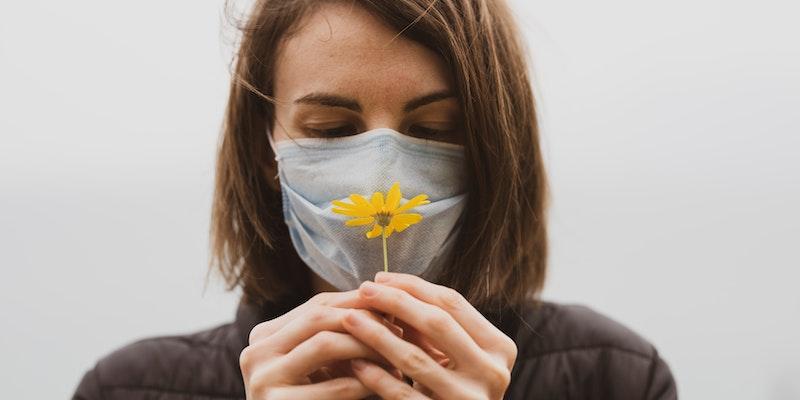On Silent Feet: Could You Be Suffering from Walking Pneumonia?
Oct 09, 2023 By Nancy Miller
Walking pneumonia refers to atypical Pneumonia, a milder form. Microorganisms like bacteria, viruses, fungi, and others can cause Pneumonia, which inflames the lungs' air sacs. The term "walking" implies that the person is not bedridden, as with severe Pneumonia.
Walking Pneumonia Versus Traditional Pneumonia
The distinction between walking pneumonia and its more severe counterpart lies mainly in the severity and type of symptoms. People with walking pneumonia might still feel the urge to continue their daily routines, unaware they have a lung infection.
Symptoms of walking Pneumonia are generally subtler, sometimes leading individuals to underestimate the condition. They might dismiss walking pneumonia symptoms as merely a nagging cold or the aftermath of a tiring week.
Critical Differences Between Walking Pneumonia and Regular Pneumonia
Determining and acknowledging the differences between regular and walking pneumonia is obligatory. Some of the differences are stated below:
Symptom Severity and Manifestation
Walking pneumonia: While bothersome, walking pneumonia symptoms are usually milder. Fatigue, mild fever, coughing, and chest pain may occur. However, walking pneumonia symptoms might not disrupt daily life as drastically as regular Pneumonia symptoms.
Regular Pneumonia: This condition typically presents with higher fevers, pronounced chest pain, difficulty breathing, and a deeper, more productive cough. The fatigue experienced in regular Pneumonia is more debilitating, often causing patients to be bedridden.
Duration and Recovery
The question of how long walking Pneumonia lasts can vary based on individual health and the effectiveness of treatment. Walking Pneumonia lasts a few days to weeks. Walking pneumonia symptoms like a persistent cough may last after recovery.
In contrast, regular Pneumonia's effects can be felt for several weeks to months. Recovery often requires a more extended rest period and, in severe cases, hospitalization.
Who is at Risk?
Demographics and Age
While walking Pneumonia can affect individuals across different age groups, some demographics are more prone. Due to their developing immune systems, infants and toddlers are more susceptible. However, seniors 65 and older often have a decline in immune response, making them potential targets for walking Pneumonia.
Health Conditions and Lifestyle Choices
Asthmatics and COPD patients are more susceptible to lung infections like walking Pneumonia due to compromised lung function.
Smokers and inhaled corticosteroids users may have reduced lung and immune function, increasing their Risk of infection. Additionally, the duration of walking Pneumonia might be extended in these groups due to compromised lung health.
Environmental Factors
Specific environments can elevate the Risk of transmission. Crowded places, such as dormitories, nursing homes, or public transportation systems, can become hotspots for the spread of infectious agents causing walking Pneumonia.
Recognizing the Symptoms

Initial Indicators
Walking pneumonia can often disguise itself as a typical cold or flu. The symptoms of walking Pneumonia initially might include fatigue, a mild fever, and a dry cough. Many might dismiss these walking pneumonia symptoms, attributing them to a seasonal change or general weariness.
Comprehensive List of Symptoms
- Mild fever (often less than 101 degrees Fahrenheit)
- Fatigue or general feeling of being unwell
- Persistent dry cough
- Sneezing and nasal congestion
- Sore throat
- Headaches
- Muscle aches
- Chest discomfort
Differentiating From Common Cold
The duration is critical in distinguishing between a regular cold and walking pneumonia. The question, "How long does walking pneumonia last?" is central to this differentiation. While a cold might last for a week, the symptoms of walking Pneumonia persist over a more extended period, often spanning several weeks.
Moreover, walking pneumonia symptoms might intensify, ranging from a mild sore throat and cough to pronounced chest discomfort and heightened fatigue. Recognizing these symptoms of walking Pneumonia early on can lead to more effective and timely treatment.
Diagnostic Measures and Tests
Primary Examination
A healthcare provider's initial step would be a thorough physical examination and a detailed discussion about the symptoms, duration, and intensity. Knowing how long the walking pneumonia symptoms have been present and their progression can aid in diagnosis.
Advanced Testing
- Chest X-rays: They are instrumental in determining any inflammation or infection within the lungs. X-rays can reveal areas where the lungs are affected and to what extent.
- Mucus Sample: Extracting and examining a sample can help identify the causative agent, bacterial, viral, or fungal.
- Blood Tests: A sample of blood sample ascertain the white blood cell count. A higher count typically indicates an ongoing infection in the body.
Interpreting Results
Determining how long walking Pneumonia lasts and its severity is essential. The diagnostic tests and the noted symptoms of walking Pneumonia guide healthcare providers in forming an accurate diagnosis and devising an appropriate treatment plan.
Effective Treatment Strategies
Bacterial Origin
Antibiotics are the primary treatment mode if walking pneumonia symptoms stem from a bacterial source. Some of the commonly prescribed antibiotics include:
- Macrolide antibiotics, such as azithromycin and clarithromycin
- Fluoroquinolones, like ciprofloxacin and levofloxacin
- Tetracyclines, including doxycycline and tetracycline
Completing the course when prescribed antibiotics is crucial, even if walking pneumonia symptoms subside. This ensures that the bacteria are completely eradicated, preventing a recurrence.
Viral or Other Causes
The treatment primarily focuses on relief if the walking pneumonia symptoms are due to viruses or other non-bacterial agents. Over-the-counter medications can alleviate symptoms like cough and congestion. Rest, hydration, and supportive care become paramount because the body needs time to fight the viral infection.
Transmission: Is it Contagious?
Absolutely. Walking pneumonia is airborne. Coughing, sneezing, or even talking can release droplets carrying the infectious agents. Unknowingly, people might remain contagious for 2-4 weeks before the first symptom appears.
Diagnosing Walking Pneumonia
Clinical Evaluation
It begins with a thorough physical examination. Health providers may assess your medical history, symptoms duration, and known exposure to infected individuals.
Auscultation
Using a stethoscope, healthcare providers listen to your lungs, seeking abnormal sounds hinting at an infection.
Diagnostic Tests
- Chest X-rays: Provide a visual of lung conditions.
- Blood Tests: Assess white blood cell count and specific antibodies.
- Mucus Samples: Confirm the presence of infectious agents.
Effective Treatment Strategies
Treatment varies based on the identified cause:
- Bacterial Infections: Common antibiotics include macrolides like azithromycin, fluoroquinolones, or tetracyclines.
- Viral Infections: Supportive care, including OTC medications and rest, is recommended.
- Fungal Infections: Antifungal medications may be prescribed.
It's paramount to adhere to the complete medication regimen, even if symptoms subside.
Prevention and Safeguarding Health
While no vaccine directly combats walking Pneumonia, the following steps reduce Risk:
- Cover your mouth while coughing or sneezing.
- Practice regular hand hygiene.
- Use masks, especially if suffering from other chronic conditions.
- Annual flu shots can offer indirect protection.
- Abstain from smoking.
Prognosis and Recovery
The majority of walking pneumonia cases resolve favorably. Typically, with appropriate care, individuals feel better within a week. However, some symptoms, like a persistent cough, might linger for weeks.
Conclusion
Walking Pneumonia, despite being milder than its counterpart, warrants attention. Recognizing the signs early and seeking prompt care ensures a swift recovery. Always prioritize prevention and safeguarding your health and those around you.

Yoga Positions That Can Help Ease Gas Discomfort And Bloating

Uncovering the Triggers Behind Sudden Urge to Urinate

Best Weight Training Workouts For Field Hockey

Gluten-Free Diet: A Guide On Foods, Benefits, And Diet Plan

Eye-Opening Insights: Busting Myths Around the Tear Trough

Glycolic Acid and Retinol: Is It Safe To Use Them Together?

A Far-Reaching Guide to Calorie Deficit



